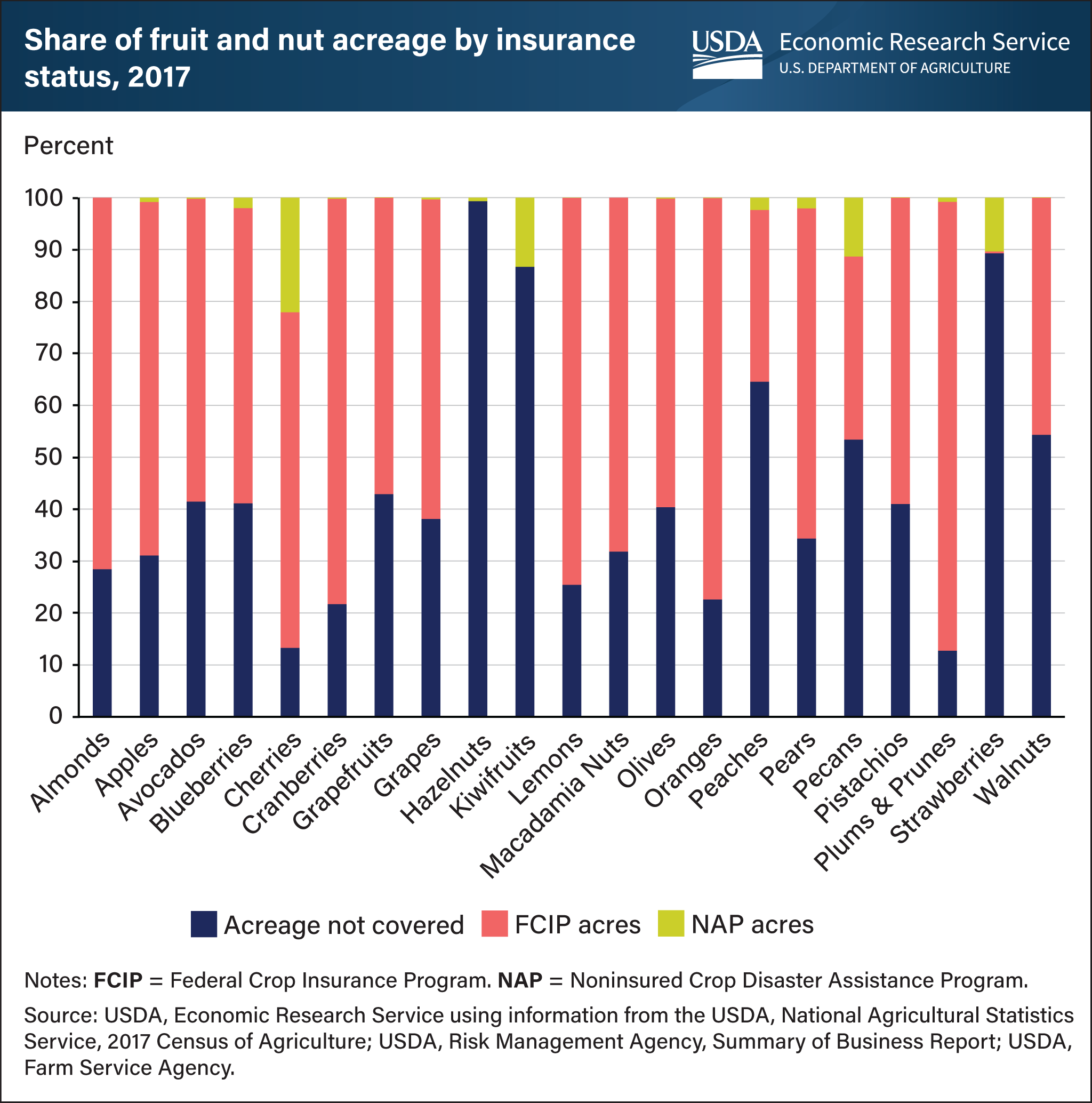Insured acreages vary widely across fruit and nut specialty crops
- by Sharon Raszap Skorbiansky
- 9/26/2022

There are two permanent Federal options for specialty crop farmers to protect themselves against losses from natural disasters, but usage varies widely across fruit and nut crops. The USDA Risk Management Agency offers Federal Crop Insurance Program (FCIP) products to cover specialty crops in counties with enough data available to offer an actuarially sound insurance product. For crops grown in counties without enough data to provide FCIP products, coverage is available through the USDA Farm Service Agency Noninsured Crop Disaster Assistance Program (NAP). Using cherries as an example, FCIP is available for cherry growers who operate in counties with a high number of cherry acres. Because of this, farmers used FCIP to cover about 65 percent of all cherry acres. Cherry growers outside of those counties used NAP policies to cover about 20 percent of all cherry acres, leaving only 15 percent of acres not covered by any risk management program. For some crops, however, Federal agricultural risk management programs covered only a small portion of acres. Kiwifruits and strawberries had less than 15 percent of acres covered by either FCIP or NAP, while hazelnuts had less than 1 percent. This chart appears in the Economic Research Service bulletin Specialty Crop Participation in Federal Risk Management Programs, published in September 2022.

